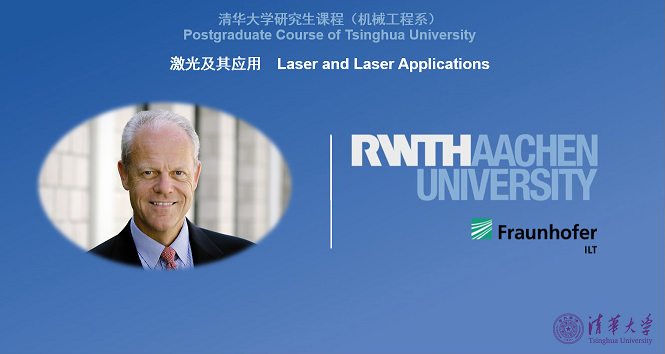
当前课程知识点:英文期刊论文发表——通往国际学术舞台的阶梯 > 4.Textual Construction of Research Articles 期刊论文的谋篇布局 > 4.4 Logical Development (II) 语篇逻辑发展 (II) > 4.4 Logical Development (II) 语篇逻辑发展 (II)
返回《英文期刊论文发表——通往国际学术舞台的阶梯》慕课在线视频课程列表
返回《英文期刊论文发表——通往国际学术舞台的阶梯》慕课在线视频列表
-1.1 Challenges in Research Article Writing 论文写作的挑战
--1.1 Challenges in Research Article Writing 论文写作的挑战
-1.2 The Components of Research Articles 论文要素
--1.2 The Components of Research Articles 论文要素 1.2
-1.3 Student Experience in Research Article Writing 写作经验分享
--1.3 Student Experience in Research Article Writing 写作经验分享
-第一章课后习题
-2.1 Stylistic Features of Research Articles 期刊论文的语言风格
--2.1 Stylistic Features of Research Articles 期刊论文的语言风格
-2.2 Formal Language and Informal Language正式语言和非正式语言的对比
--2.2 Formal Language and Informal Language正式语言和非正式语言的对比
-2.3 Lexical Density 词汇也有密度?
-2.4 Strategies of Increasing Lexical Density
--2.4 Strategies of Increasing Lexical Density
-2.5 Nominalization 名词化结构
-第二章课后习题
-Lexical Selection of Research Articles 期刊论文的遣词
-3.1 Differences between English and Chinese Sentences英汉句式的差异
--3.1 Differences between English and Chinese Sentences英汉句式的差异
-3.2 Syntactic Features of Research Articles 期刊论文句式特点
--3.2 Syntactic Features of Research Articles 期刊论文句式特点
-3.3 Replacement of Attributive Clauses 定语从句的简化
--3.3 Replacement of Attributive Clauses 定语从句的简化
-3.4 Voice in Research Articles 期刊论文的语态
--3.4 Voice in Research Articles 期刊论文的语态
-第三章课后习题
-4.1 Paragraph Writing 段落写作
-4.2 Unity & Coherence in Discourse 语篇一致性及连贯性
--4.2 Unity & Coherence in Discourse 语篇一致性及连贯性
-4.3 Logical Development (I) 语篇逻辑发展(I)
--4.3 Logical Development (I) 语篇逻辑发展 (I)
-4.4 Logical Development (II) 语篇逻辑发展 (II)
--4.4 Logical Development (II) 语篇逻辑发展 (II)
-第四章作业
-5.1 Types of Abstracts 摘要类型
-5.2 Structure of Informative Abstracts 信息型摘要的结构
--5.2 Structure of Informative Abstracts 信息型摘要的结构
-5.3 Language Resources for Abstracts摘要的常见词句
--5.3 Language Resources for Abstracts摘要的常见词句
-5.4 Tense in Abstracts 摘要的时态
--5.4 Tense in Abstracts 摘要的时态
--摘要案例比较练习
-5.5 Common Errors in Abstracts 摘要常见错误分析
--5.5 Common Errors in Abstracts 摘要常见错误分析
-第五章课后习题
-6.1 Structure of the Introduction Section 引言部分结构
--6.1 Structure of the Introduction Section 引言部分结构
-6.2 Establishing the Topic 确立主题
--6.2 Establishing the Topic 确立主题
-6.3 Reviewing Literatures 综述文献
--6.3 Reviewing Literatures 综述文献
-6.4 Identifying a Problem 确定研究问题
--6.4 Identifying a Problem 确定研究问题
-6.5 Introducing the present study 介绍本研究
--6.5 Introducing the present study 介绍本研究
-第六章课后习题
-7.1 Structure of Materials and Methods方法部分结构
--7.1 Structure of Materials and Methods方法部分结构
-7.2 Language Resources of Materials and Methods 材料和方法部分的常用词句
--7.2 Language Resources of Materials and Methods 材料和方法部分的常用词句
-第七章课后习题
-8.1 Structure of the Results Section 结果部分的结构
--8.1 Structure of the Results Section 结果部分的结构
-8.2 Language Resources for the Results Section 结果部分的常用词句
--8.2 Language Resources for the Results Section 结果部分的常用词句
-第八章课后习题
-9.1 Structure of the Discussion Section 讨论部分结构
--9.1 Structure of the Discussion Section 讨论部分结构
-9.2 Language Resources for the Discussion Section 讨论部分的常用词句
--9.2 Language Resources for the Discussion Section 讨论部分的常用词句
-9.3 Hedging 模糊语的使用
-9.4 Structure of the Conclusion Section 结论的结构
--9.4 Structure of the Conclusion Section结论的结构
-9.5 Language Resources for the Conclusion Section 结论的常见词句
--9.5 Language Resources for the Conclusion Section结论的常见词句
-第九章课后习题
-10.1 Functions of References 参考文献的作用
--10.1 Functions of References 参考文献的作用
-10.2 Reference Regulations and Reference Styles 参考文献的规范和样式
--10.2 Reference Regulations and Reference Styles 参考文献的规范和样式
-10.3 Ways to avoid plagiarism 如何规避学术剽窃
--10.3 Ways to avoid plagiarism 如何规避学术剽窃
-第十章课后习题
-11.1 Common Errors in Research Articles (I) 论文写作常犯语言错误解析(I)
--11.1 Common Errors in Research Articles (I) 论文写作常犯语言错误解析(I)
-11.2 Common Errors in Research Articles(II) 论文写作常犯语言错误解析(II)
--11.2 Common Errors in Research Articles(II) 论文写作常犯语言错误解析(II)
-11.3 Details Matter 细节决定成败
-第十一章课后习题
-12.1 Writing a Cover Letter 投稿信的撰写
--12.1 Writing a Cover Letter 投稿信的撰写
-12.2 Writing an Inquiry Letter 稿件的查询
--12.2 Writing an Inquiry Letter 稿件的查询
-12.3 Responses from Editors and Reviewers 编辑和审稿人的回复
--12.3 Responses from Editors and Reviewers 编辑和审稿人的回复
-12.4 Responding to Reviewers’ Comments 回复审稿人意见
--12.4 Responding to Reviewers’ Comments 回复审稿人意见
-12.5 Interview with a professor 专家访谈
--12.5 Interview with a professor 专家访谈
-第十二章课后习题







